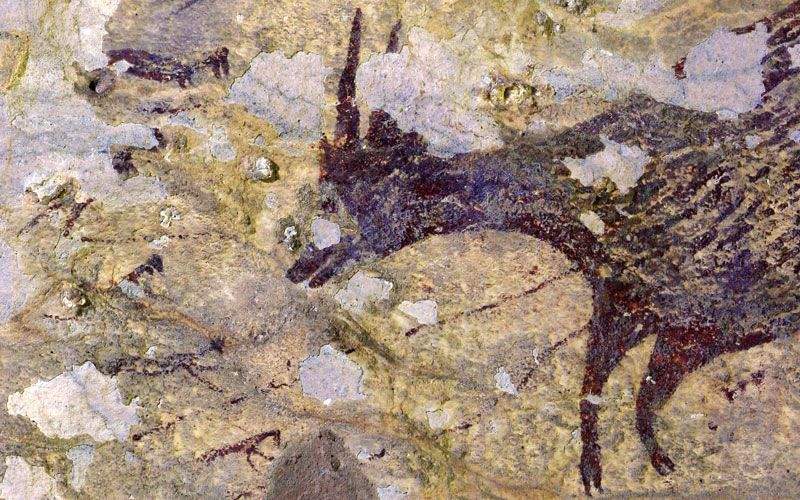A major new archaeological discovery could bring art history textbooks up to date with the chapter onrock art: a hunting scene painted on the wall of a cave has been discovered that has been dated by experts to more than 44,000 years ago (albeit with some doubts discussed below) and would therefore make it the oldest in the world. The cave is located on the island of Sulawesi, Indonesia, and the painted scenes were accidentally discovered in 2017 by Indonesian archaeologist Pak Hamrullah, who was trying to pave his way to the roof of another cave.It took two years for technical and scientific investigations into the painting, and the results were published in the journal Nature in a paper authored by archaeologists Maxime Aubert and Adam Brumm of Griffith University in Brisbane, Australia.
The painting depicts a hunting scene with pigs and buffalo (in addition to the animals, some human-like figures appear chasing them) and, according to the archaeologists who studied it, it is the oldest work of rock art in the world among those made with narrative intent. Other similar works can be found in Europe and can be dated to at most 21,000 years ago. And that’s not all: some scholars are convinced that the figuration (more than four meters long) does not represent a single scene, and that it was repainted and repainted perhaps over thousands of years. By contrast, the “record” for the figures discovered in Spain last year and painted by Neanderthals as many as 65,000 years ago has not been broken: these are still the oldest figures in the world. To perform the dating on the Indonesian figures, scientists analyzed the uranium isotopes present in the calcite on which the figures were painted.
The way the hunters are depicted, in animal-like forms (“therianthropes”), suggested to archaeologists that the people of Sulawesi had already developed the ability to imagine entities that did not exist in the natural world. The scene, in fact, could have mythological or supernatural connotations.
“I’ve never seen anything like it,” Brumm said. “We have studied hundreds of rock art sites in this region, but we had never found a hunting scene.” The discovery, in fact, completely changes ideas about the origins of figurative art. “It has always been believed that this kind of tradition arose in Europe,” said Alistair Pike, archaeologist at the University of Southampton. “This discovery shows that the tradition originated elsewhere.” Pike, however, suggests caution: in fact, the scientist recalled that the dating was carried out only on the portion of the wall where the animals are depicted, while the same studies were not conducted on the therianthropes (in fact, no calcite useful for dating was found where these figures were present), and it is therefore not to be ruled out that the man-beasts were added later. Scholars are therefore in disagreement on this point: some believe that the therianthropes were painted at the same time as the animals, and some believe that they were executed at two different times. The doubts will probably be answered by an analysis of the pigments used, to verify that they are the same.
 |
| Rock art, possibly the world's oldest hunting scene discovered |
Warning: the translation into English of the original Italian article was created using automatic tools. We undertake to review all articles, but we do not guarantee the total absence of inaccuracies in the translation due to the program. You can find the original by clicking on the ITA button. If you find any mistake,please contact us.